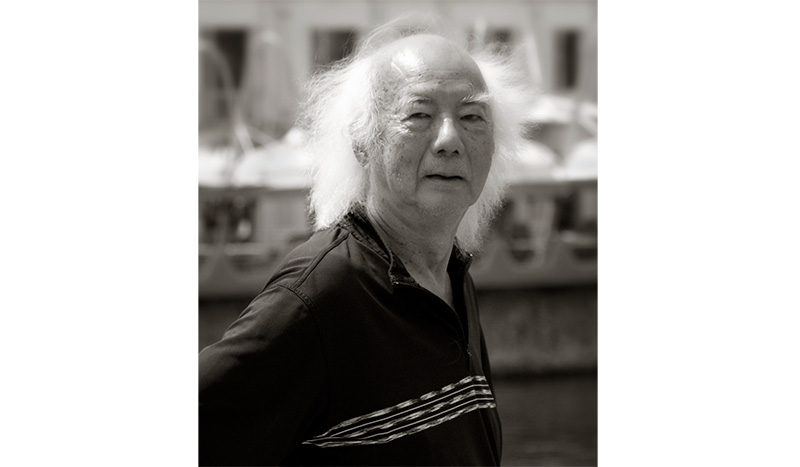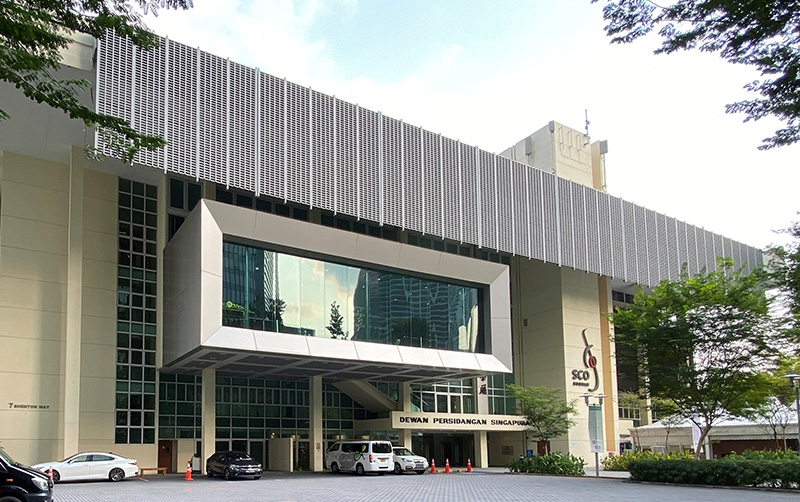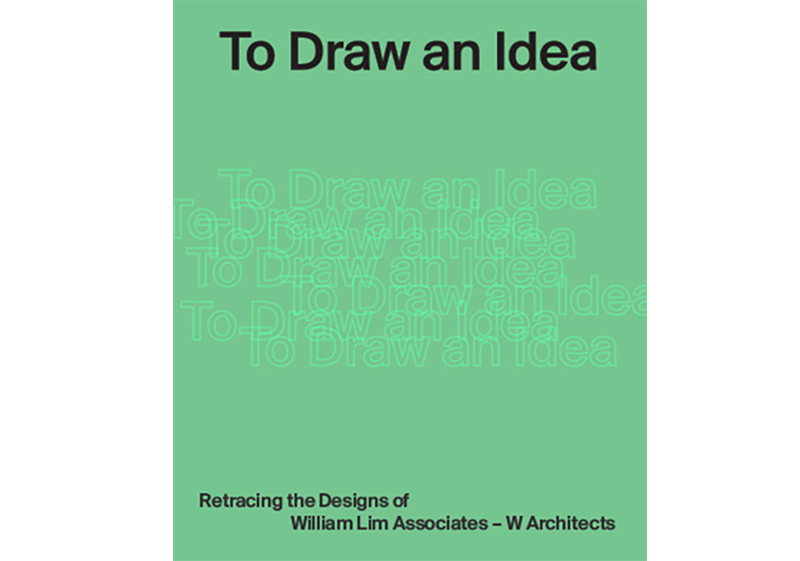Remembering William Lim
The late architect William Lim did more than shape Singapore’s skyline. He was also deeply passionate about urban planning, culture, the arts and engaging the next generation.
By Stephanie Pee

Pioneer architect William Lim died in January 2023 at the age of 90 after a long career in Singapore. He had helped shape the cityscape with a number of iconic buildings that he had been involved in designing. These include the Singapore Conference Hall and Trade Union House (1965), People’s Park Complex (1973), Golden Mile Complex (1974) and Marine Parade Community Building (1999). In addition to being an architect, he was also active in urban conservation as well as the local arts scene.
Born in Hong Kong in 1932, Lim was a graduate of the Architectural Association School of Architecture in London where he was influenced by the Modernist movement, including Brutalism, an architectural style that is minimalist and emphasises materials, textures and construction. After graduating in 1955, he received a Fulbright scholarship to study in the Department of City and Regional Planning at Harvard University. He returned to Singapore and joined James Ferrie & Partners in 1957.1
In 1960, Lim left the firm and started Malayan Architects Co-Partnership (MAC) with architects Lim Chong Keat and Chen Voon Fee whom he had met while studying in the UK. Together, they introduced the Brutalist style to Singapore’s architecture through their work on the Singapore Conference Hall and Trade Union House (today’s Singapore Conference Hall, gazetted as a national monument in 2010) in 1965.2

Following the dissolution of MAC in 1967, Lim co-founded Design Partnership (renamed DP Architects in 1975) with fellow pioneer architects Tay Kheng Soon and Koh Seow Chuan. The trio shaped Singapore’s skyline with more Brutalist pieces like People’s Park Complex (1973) and Woh Hup Complex (today’s Golden Mile Complex, gazetted in 2021).3

In 1981, Lim left DP Architects and established William Lim Associates (WLA) with architects Mok Wei Wei, Richard Ho and Carl Larson. This period saw Lim embrace Postmodernism, an architectural style that appeared in the late 1970s in response to the philosophy and style of Modernism, which rejected ornamentation and emphasised minimalism. Postmodernism is notable for features such as curved forms, decorative elements and bright colours. This shift was reflected in projects such as Church of Our Saviour (1985), Yeo Hiap Seng Factory (1986), Tampines North Community Centre (1989) and Marine Parade Community Building (1999).
In 2003, the firm was renamed WArchitects following Lim’s retirement from practice. It is now helmed by Mok and Ng Weng Pan.4
Lim was also the author of numerous books such as Alternative (Post)modernity (2003), Asian Alterity (2008), Incomplete Urbanism (2012) and Public Space in Urban Asia (2014). He also edited architectural journals where he delved into diverse subjects, ranging from urban planning and architecture to broader topics like modernity, social justice and cultural identity.5 He was also deeply concerned about the conservation of Singapore’s architectural heritage.
Labelled by Mok as “an ‘enabler’ who brought talented people together to collaborate on meaningful projects”,6 Lim, together with other architects such as Mok and Richard Ho,7 restored several shophouses on Emerald Hill.
In 1982, Lim worked with Singaporean poet Goh Poh Seng on Bu Ye Tian (不夜天), a $52-million concept to rejuvenate, adapt and reuse the Boat Quay area. Bu Ye Tian, which means “a place of ceaseless activity” in Mandarin, called for the rejuvenation of the entire area into a cultural and recreation destination. Although it was not ultimately adopted by the Urban Redevelopment Authority, this initiative played a major role in accelerating the conservation movement in Singapore and later inspired the planning authorities’ conservation programme at Boat Quay in the 1990s.8
In the local arts scene, Lim was a “thought leader and advocate of creativity and heritage”, a regular presence at arts events and a generous patron of various arts groups.9 In 2007, he helped establish the Cultural Studies in Asia PhD programme at the National University of Singapore with a S$1 million endowment.10 For his 80th birthday in 2012, Lim donated an undisclosed six-figure sum to various arts organisations. Beneficiaries included the Singapore Art Museum, Wild Rice, Arts Fission and two independent artists.11
Lim’s legacy lives on through his works as well as the next generation whose lives he touched and inspired.
The Urban Redevelopment Authority and National Library Board are organising the exhibition “To Draw an Idea” at the URA Centre (Level 1 Atrium) from 28 November 2023 to 8 June 2024. It examines the inspiration, motivation, conceptual design and thought processes behind the works of Singapore architectural firms, William Lim Associates and W Architects, through their creations that shape the designs of many local, well-known buildings over the past four decades – from the 1980s to today.
The exhibition is based on materials that have been donated to the Singapore Architecture Collection, managed by the URA, NLB and the National Heritage Board, in close partnership with the Singapore Institute of Architects, the National University of Singapore and the Singapore University of Technology and Design. Stakeholders from the industry and academia have also contributed their ideas on the direction and focus of this new collection.
In the exhibition, one of the projects featured is the renovation of the Victoria Theatre and Victoria Concert Hall in 2010. The project saw the renovation of key spaces and features, including a double-volume foyer within the theatre and the concert hall’s main lobby.

2011
Digital print on paper
594x841mm
B29493274G_0005
William Lim Associates and W Architects Pte Ltd Collection. Collection of the National Library, Singapore.
The exhibition also features the Lee Kong Chian Natural History Museum that opened in 2015. The museum uses off-form concrete, which involves a casting process that is difficult to control. Shown here is the formwork pattern and casting sequence for each building floor (below). The structure also has a distinctive facade featuring vegetation native to Singapore (bottom).

2013
Digital print on paper
841 x 1189 mm
B29493498D_0002
William Lim Associates and W Architects Pte Ltd Collection. Collection of the National Library, Singapore.

2013
Digital print on paper with ink annotations
297x420mm
B29488115E_0001
William Lim Associates and W Architects Pte Ltd Collection. Collection of the National Library, Singapore.
An accompanying book of the same name has been published. It charts the last four decades of the evolution of the work of William Lim Associates and W Architects over 220 conceptual sketches, architectural drawings and historical artefacts from their archives, along with behind-the-scenes stories of how the firm realised its creative visions. It is available for reference and for loan at the Lee Kong Chian Reference Library and selected public libraries, as well as online via the NLB Mobile app.
A satellite exhibition, “Dare to Design: Singapore Architecture 1960s–2000s”, will take place at the lobby of the National Library Building. It will run from 28 November 2023 to 9 June 2024 and will showcase eight iconic buildings – from the National Theatre to Pinnacle@Duxton – that pushed the envelope of architecture in Singapore. A roving exhibition will also travel to Bishan Public Library (28 November 2023–31 January 2024), Jurong Regional Library (1 February 2024–31 March 2024) and Tampines Regional Library (1 April 2024–9 June 2024).

 Stephanie Pee is a Manager with the Publishing team at the National Library, Singapore.
Stephanie Pee is a Manager with the Publishing team at the National Library, Singapore.NOTES
-
Justin Zhuang, “William Lim Siew Wai,” in Singapore Infopedia. National Library Board Singapore. Article published 31 March 2016. ↩
-
Isabel Tan and Valerie Chew, “Singapore Conference Hall,” in Singapore Infopedia. National Library Board Singapore. Article published 2011. ↩
-
“William Lim,” Esplanade Offstage, 12 October 2016, https://www.esplanade.com/offstage/arts/william-lim; Zhuang, “William Lim Siew Wai.” ↩
-
Esplanade Offstage, “William Lim”; Zhuang, “William Lim Siew Wai.” ↩
-
S.W. Lim, Alternative (Post)modernity: An Asian Perspective (Singapore: Select Pub, 2003). (From National Library, Singapore, call no. RSING 303.4 LIM); William S.W. Lim, Asian Alterity: With Special Reference to Architecture + Urbanism Through the Lens of Cultural Studies (Singapore: World Scientific, 2008). (From National Library, Singapore, call no. RSING 720.95 LIM); William S.W. Lim, Incomplete Urbanism: A Critical Urban Strategy for Emerging Economies (Singapore: World Scientific, 2012). (From National Library, Singapore, call no. RSING 307.1 LIM); William S.W. Lim, Public Space in Urban Asia (Singapore: World Scientific, 2014). (From National Library, Singapore, call no. RSING 307.76095 LIM); Zhuang, “William Lim Siew Wai.” ↩
-
Chantal Sajan, “The Late William Lim: Pioneer Architect, Arts Patron, Heritage Champion and Social Activist,” Straits Times, 4 March 2023, https://www.straitstimes.com/life/home-design/the-late-william-lim-pioneer-architect-arts-patron-heritage-champion-and-social-activist. ↩
-
Robert Powell, et al., “Inciting Rebellion,” in No Limits: Articulating William Lim (Singapore: Select Publishing, 2002), 14–46. (From National Library, Singapore, call no. RSING 720.92 NO) ↩
-
Zhuang, “William Lim Siew Wai”; Mok Wei Wei, Mok Wei Wei: Works by W Architects, ed. Justin Zhuang (Singapore: Thames & Hudson, 2020), 42. (From National Library, Singapore, call no. RSING 720.95957 MOK) ↩
-
Esplanade Offstage, “William Lim.” ↩
-
“In Memoriam: William Lim Siew Wai, Eminent Architect and Benefactor of NUS Cultural Studies Programme,” NUS Faculty of Arts & Social Sciences, 19 January 2023, https://fass.nus.edu.sg/news/2023/01/19/in-memoriam-william-lim-siew-wai-eminent-architect-and-benefactor-of-nus-cultural-studies-programme/; Zhuang, “William Lim Siew Wai.” ↩
-
Zhuang, “William Lim Siew Wai.” ↩

